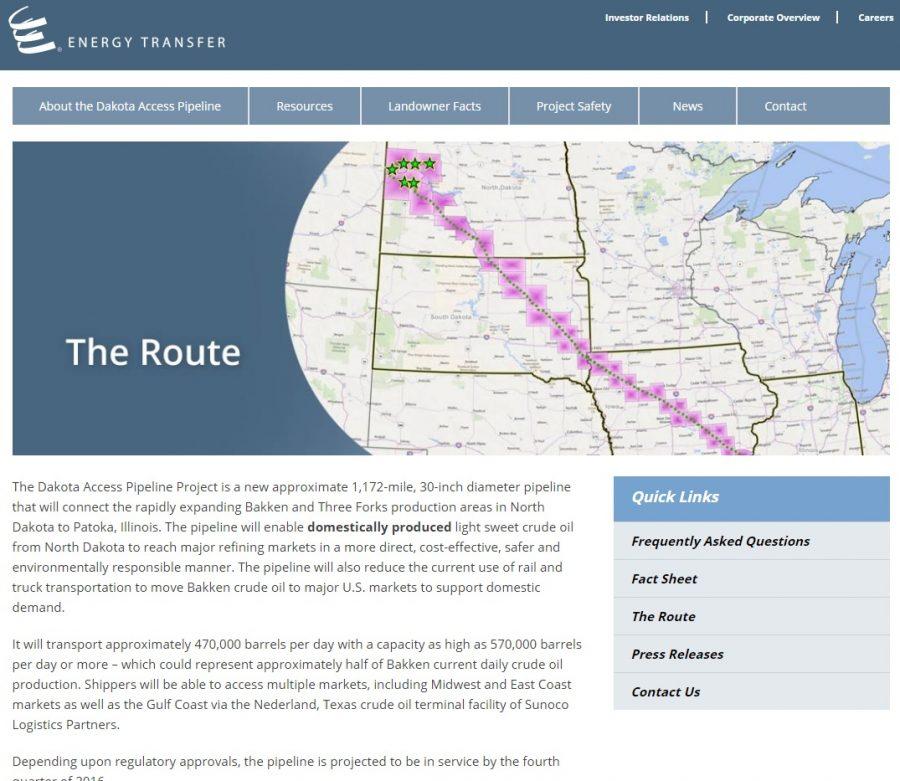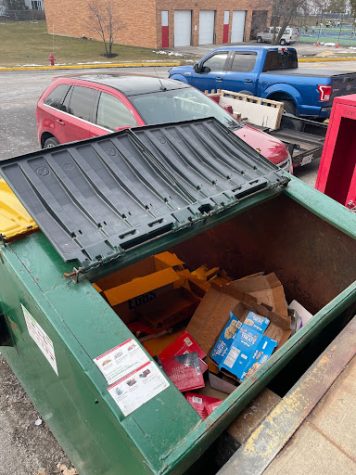Dakota Access Pipeline: Battle of the Cultures
October 17, 2016
Most people have heard about the controversy behind the Keystone Pipeline; however, today’s oil criticism is regarding the Dakota Access Pipeline, otherwise known as the DAPL. This proposed pipeline would begin in North Dakota and travel through South Dakota, Iowa and Illinois.
According to the DAPL’s official website, “The project will require the construction of approximately 1,172 miles of 12-inch to 30-inch diameter pipeline.”
The company behind the pipeline, Energy Transfer Partners, has been receiving backlash from Native Americans because this pipeline would travel dangerously close to their reservation along with crossing sacred sites and burial places.
Congresswoman Betty McCollum, the Democratic co-chair of the Native American Caucus, along with 18 other House Democrats, addressed President Barack Obama about concerns regarding the interference of this pipeline and the Standing Rock Sioux on Sept. 14 with a letter.
“The federal government has a moral and legal trust responsibility to ensure that federally permitted projects do not threaten historically or culturally significant tribal places, the trust lands of tribal nations, or the waters that run through them,” read the letter. “We stand with tribal leaders in asking you to uphold our federal trust responsibility and protect tribal interests in this and future permitting decisions by the United States Army Corps of Engineers.”
The letter continued by calling out the lack of communication to those tribal governments residing within a mile of the prospective pipeline. The members of the House who contributed their opinions feel that the president and the United States Army Corps of Engineers have not fulfilled their responsibility to the native population.
Spanish Teacher and Diversity Club Adviser Blair Winter said, “It’s especially horrific that we’d disrespect multiple cultures that we’ve already disrespected throughout our entire history.”
The stances taken by members of the Native American Caucus and Winter suggest a cultural ignorance in which Energy Transfer Partners is partaking. By disregarding the native population, some argue that Energy Transfer Partners isn’t taking into account all variables in this project.
Economics Teacher Andrew Hirshman said, “In economics, decisions are made by marginal thinking, which is the opposite of black and white. Take pollution–it isn’t whether or not we should have people love or hate it, but some is necessary for the world to exist.”
According to this way of thinking, all benefits need to be weighed against disadvantages. Many feel that this has not been successfully implemented because of the disregard for the indigenous people living around the DAPL project.
“It’s going to eventually ruin the Native American water supply because it’s going through their [water] supply on the reservation,” said Megan Allen, junior. “The company also has a history of spills and leakages.”
Allen’s concerns align with the thousands of protesters fighting against this construction for the various reasons already mentioned.
Energy Transfer Partners, on the other hand, argues that by creating this pipeline, the U.S. will become less reliant on foreign oils. They also stated that they’re liable for any damages caused by the pipeline. This company is also willing to compensate those who will have the pipeline within their property.
Additionally, those in support of the DAPL state this will help the U.S. economy by allowing the acquisition of internal oil.
However, others feel the economic argument should not outweigh the environmental concerns.
“I understand that the economics is a concern for the United States, but I think we should value environmental concerns over economic,” said Winter. “We should be doing as much as we can to make the continued use of gas and petroleum more expensive to force us to invest more in alternative energies.”
Those invested in this controversy acknowledge the benefits and disadvantages to DAPL, but those against it worry that some will prosper while others suffer.



